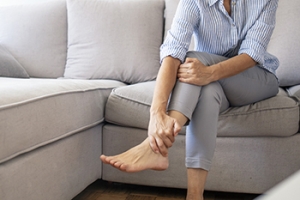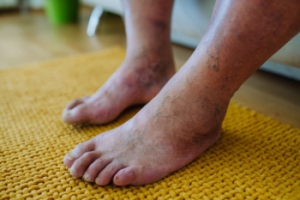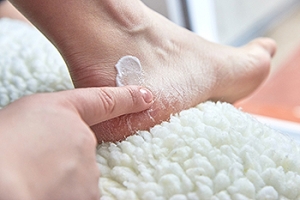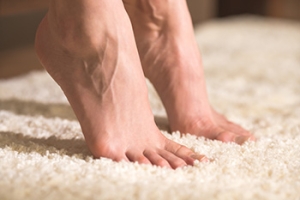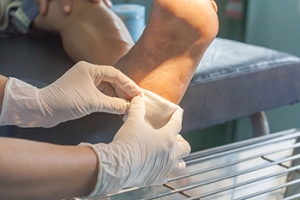Managing Foot Osteoarthritis
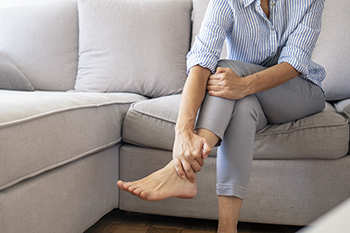
Osteoarthritis in the foot occurs when the protective cartilage in the joints wears down over time, leading to pain, stiffness, and swelling. It is especially common in the big toe joint, midfoot, and ankle. Everyday activities like walking or standing can become difficult, and symptoms often worsen with age or after previous injuries. Traditional treatment focuses on reducing pain and maintaining mobility. Supportive footwear, orthotics, and targeted exercises can help relieve pressure on affected joints. Anti-inflammatory medication and corticosteroid injections may also reduce inflammation. In severe cases, joint fusion or joint replacement surgery might be considered. If you are experiencing persistent foot pain or stiffness, it is suggested that you schedule an appointment with Dr. DiNucci for a thorough evaluation, proper diagnosis, and a personalized treatment plan.
Arthritis can be a difficult condition to live with. If you are seeking treatment, contact Kent DiNucci, DPM from Ankle and Foot Clinic . Our doctor can provide the care you need to keep you pain-free and on your feet.
Arthritic Foot Care
Arthritis is a joint disorder that involves the inflammation of different joints in your body, such as those in your feet. Arthritis is often caused by a degenerative joint disease and causes mild to severe pain in all affected areas. In addition to this, swelling and stiffness in the affected joints can also be a common symptom of arthritis.
In many cases, wearing ill-fitting shoes can worsen the effects and pain of arthritis. Wearing shoes that have a lower heel and extra room can help your feet feel more comfortable. In cases of rheumatoid arthritis, the arch in your foot may become problematic. Buying shoes with proper arch support that contour to your feet can help immensely.
Alleviating Arthritic Pain
- Exercises that stretch the foot can prevent further pain and injury and increase mobility
- Most of the pain can be alleviated with anti-inflammatory drugs, heat, and topical medications
- Massages can help temporarily alleviate pain.
It is best to see your doctor for the treatment that is right for your needs and symptoms. Conditions vary, and a podiatrist can help you determine the right method of care for your feet.
If you have any questions, please feel free to contact our office located in Omaha, NE . We offer the newest diagnostic tools and technology to treat your foot and ankle needs.
Arthritic Foot Care
During your lifetime, you will probably walk about 75,000 miles, which is quite a lot of stress to put on your feet. As you get older, the 26 bones and 30 joints in each of your feet will lose flexibility and elasticity. Your foot’s natural shock absorbers will wear down as well. Having arthritis added to this mix only makes matters worse. Your joints will become distorted and inflamed.
When dealing with arthritis, having additional foot complications, such as bunions, hammertoes, or neuroma, can be a serious detriment. To avoid these, buy well-fitting shoes with a lower heel and good support like The Foot Chair adjustable orthotic/arch support. . Arthritis can decrease stability of the midfoot joints and this can allow your arch to lose support so having shoes with good arch support is also highly recommended.
Aside from getting good arch support (lilke The Foot Chair), the shoes need to fit comfortably and properly as well. A good place to start is by leaving a finger width between the back of the shoe and your foot to gauge proper size. It is also helpful to have a square or rounded toe box in the front to provide even more comfort.
Exercise is another key aspect of arthritic foot care. Exercise not only strengthens and stretches your muscles and joints, but helps to prevent further injury and pain as well. Stretching the Achilles tendon, the tendon located in the back of your heel, will give you added mobility and reduce pain due to stress. Another thing you can do is massage your feet, kneading the ball of your foot as well as your toes from top to bottom.
Stretching the Achilles tendon is a simple exercise that you can do at home anytime. Lean against the wall with your palms flat against the surface while placing one foot forward, towards the wall, and one foot behind you. Bend your forward knee towards the wall while keeping your back knee locked straight, and make sure both your heels are completely touching the ground at all times. This will stretch your Achilles tendon and calf muscles as well. You will feel the stretch almost immediately. You can also stretch your toes in a couple ways. One involves taking a rubber band and wrapping it around both your big toes while your heels remain together. Then, pull them apart to stretch your big toe. You can also place a rubber band around all the toes of one of your feet. Then, try to separate each individual toe, stretching them all.
A final step you can take to help your arthritis is taking non-steroid, non-inflammatory drugs or topical medicines with capsaicin.
Sports Related Foot And Ankle Injuries
Foot and ankle injuries are common among people who participate in sports. Several factors contribute to this. They include failing to stretch or warm up properly, not wearing the proper type of shoe and not taping or providing other types of support for the ankle or foot. The most common foot and ankle injuries suffered by people involved in sports are plantar fasciitis, ankle sprains and Achilles tendon damage or ruptures. If not treated properly, they can lead to permanent disability.
Treating these injuries is relatively simple if they are identified and addressed early. Many athletes dismiss the initial aches and pains associated with injury as just soreness or tired muscles. Their first response is usually to try to work through it. This can lead to serious problems. Many minor injuries are made far more serious when athletes continue to put strain and pressure on them. That attitude can change a mild strain into a serious strain and a minor tear into a rupture. Athletes should have unusual aches and pains evaluated by Dr. DiNucci.
Plantar fasciitis is a painful injury. It is inflammation of the plantar fascia caused by small tears at the insertion into the bone. The plantar fascia is a thick band of tissue running from the heel to the base of the toes. There are several effective treatments for this ailment. Doctors who know what they are doing often prescribe rest, massages, night splints, anti-inflammatory medication, corticosteroids or surgery, usually in that order. Doctors that don't know what they are doing frequently prescribe stretching a torn ligament, doing physical therapy and yanking and putting more tension on a torn ligament, rolling your foot on a rolling pin which continues to tear an already torn ligament. It is usually not effective to take a ligament or tendon that is already damaged and put more tension and strain on it. The most effective treatment for plantar fasciitis is orthotics, which offers foot support. Surgery is occasionally used as a last resort, but is also very effective and usually is a life-long lasting treatment. However, since over 90% of people can resolve plantar fasciitis without surgery, we don't need to go there very often. Dr. DiNucci specializes in a minimally invasive procedure called an endoscopic plantar fasciotomy. This is a very effective method of resolving chronic plantar fasciitis so that it doesn't come back.
One thing to remember with chronic plantar fasciitis is that if there is burning, tingling or numbness (all nerve symptoms) associated with your pain, that means that a nerve is now entrapped in that area. If you address only the plantar fascia (as most doctors do) then the patient will be left with the nerve symptoms after the plantar fasciitis is gone. In fact, in most cases of plantar fasciitis that have surgery and continued pain, it is the nerves that are causing the pain. The nerve pain was not addressed. Nerve pain is most likely caused by the medial calcaneal nerve. In the early days of nerve entrapment this nerve may calm down with conservative care. However, if it doesn't then conservative care frequently fails and if surgery is delayed, the nerve symptoms can travel to the other branches inducing a tarsal tunnel syndrome with the medial and lateral plantar nerve entrapments as well. A patient would know this because they will have more burning or pain with an orthotic. More tingling or numbness in the arch, ball of the foot that shoots up into the toes and causes the toes to tingle. If this is you, then you need to see Dr. DiNucci right away and he can possibly help with this chronic, debilating problem.
The Achilles tendon is the largest tendon in the body. It connects the calf muscles to the heel bone. Running, jumping and walking all impact this tendon. Two common injuries to the Achilles tendon are tendonitis and a rupture of the tendon. Tendonitis is inflammation in the tendon often caused by an increase in the amount of stress placed on it. Non-surgical treatments include rest, ice or anti-inflammatory medication. A rupture (tear) of the Achilles tendon can be treated by placing the lower leg in a cast for several weeks or with surgery. Many physicians feel surgery is the better option because it lowers the risk of re-ruptures. Both methods require 4 to 6 months of rehabilitation.
The Causes, Types, and Treatments of Achilles Tendon Injuries
Tendons are fibrous tissues that connect muscles with bone. The Achilles tendon is the largest tendon in the body. It connects the calf muscles at the back of the leg with the heel, and facilitates movements such as jumping, running, and walking.
Because the Achilles tendon is engaged so frequently and bears a great deal of pressure and stress throughout the day, it can become injured. Achilles tendon injuries cause the tissue to become irritated, inflamed, and swollen. Pain can come on gradually or be immediate, and will vary from mild to severe depending upon the injury. Where the pain occurs will vary as well, from just above the heel up through the back of the leg. There may also be stiffness in the tendon.
Achilles tendon injuries can often be caused by repetitive stress. They may also occur while running, playing tennis, gymnastics, football, basketball, dancing, soccer, baseball or other sports that require speeding up, slowing down, or pivoting quickly. Ffalling from an elevation, stepping in a hole, having flat feet, tight leg muscles or tendons, wearing improper athletic shoes, exercising on uneven surfaces, or starting a new type of exercise can also cause Achilles tendon injuries.
The two most common Achilles tendon injuries are tendonitis and ruptures. Tendonitis causes painful inflammation and can occur in different parts of the tendon. Non-insertional Achilles tendonitis occurs when the fibers in middle of the tendon begin to break down, thicken, and swell. This condition typically affects younger, more active adults. Insertional Achilles tendonitis occurs where the tendon inserts into the heel bone. It is common for bone spurs to form with this type of injury. This condition can affect people of any age and level of activity.
Achilles tendon ruptures are a tear in the tendon. These breaks may be partial or complete. There may be an audible popping noise at the moment of injury and the pain will be sudden and severe.
An Achilles tendon injury can be diagnosed by Dr. DiNucci with a thorough exam. Depending on the type and severity of your injury, Dr. DiNucci may treat your condition with rest in a camwalker 24/7 for at least 4-6 weeks. Health care specialists who don't know the pathology of what they are working on will frequently tell you to stretch a tendon that is inflamed. "Strengthen the tendon?" This is what you might hear. Can you strengthen a tendon? The short answer is no, and certainly not when it is already damaged.
Relating to Achilles tendonitis, Dr DiNucci states that most of these cases will resolve without surgery, physical therapy or other intervention if the tendon is rested in a 90 degree position (Camwalker) for 4-6 weeks. This means that tendon is rested all day and ALL NIGHT in the 90 degree position to your leg. This allows the collagen fibers to repair and bond together in this position where you will be when you are walking. If you take the boot off when you are sleeping then don't bother with treatment at all. You may as well just write a blank check to your doctor and sign up for surgery.
Preserving Mobility and Health With Lower Limb Salvage
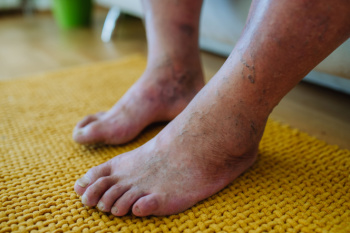
Lower limb salvage focuses on saving an at-risk leg or foot from limb loss due to severe injuries, infections, or complications from conditions like diabetes or peripheral artery disease. The goal is to restore functionality, preserve mobility, and improve quality of life while minimizing pain and complications. This task requires a multidisciplinary approach and often involves advanced techniques such as wound debridement, skin grafts, vascular procedures, and reconstructive surgery. Custom orthotics, braces, or special footwear may also be used to offload pressure and prevent further damage. Early intervention is critical, as untreated infections or poor circulation can escalate quickly. Lower limb salvage is a highly personalized process that considers each patient’s unique circumstances, focusing on long-term outcomes and independence. If you or a loved one are at risk, it is suggested that you include a podiatrist on your medical team to explore the best treatment options for preserving limb health and mobility.
Diabetic Limb Salvage
Diabetic limb salvage can be an effective way in preventing the need for limb amputation. If you have a foot ulcer and diabetes, consult with Kent DiNucci, DPM from Ankle and Foot Clinic . Our doctor will assess your condition and provide you with quality foot and ankle treatment.
What Is Diabetic Limb Salvage?
Diabetic limb salvage is the attempt of saving a limb, such as the foot, that has an infected ulcer, from amputation. Podiatrists also try to make sure that there is enough function in the foot after the salvage that it is still usable. Those with diabetes sometimes experience poor blood circulation, which prevents proper healing of an ulcer. However, most patients having limb salvage have adequate circulation and it is the nerves that are not properly working. The patient doesn't feel the damage early enough and ends up with an ulcer. If the ulcer is left uncheck, it could become infected, which could result in the need for amputation.
Diabetes is the number one cause of non-traumatic amputations in the United States. Amputation has been found to lead to higher mortality rates. This translates into higher healthcare costs, and a reduced quality of life and mobility for amputees. Podiatrists have attempted to increase the prevalence of limb salvage in an attempt to solve these issues.
Diagnosis and Treatment
Limb salvage teams have grown in recent years that utilize a number of different treatments to save the infected limb. This includes podiatrists that specialize in wound care, rehabilitation, orthotics, and surgery. Through a combination of these methods, limb salvage has been found to be an effective treatment for infected limbs, and as an alternative to amputation. Podiatrists will first evaluate the potential for limb salvage and determine if the limb can be saved or must be amputated.
If you have any questions, please feel free to contact our office located in Omaha, NE . We offer the newest diagnostic and treatment technologies for all your foot care needs.
Why Cracked Heels Are More Common in Women
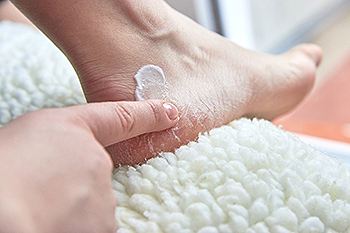
Cracked heels, or heel fissures, are common skin splits caused by dryness and thickened skin on the heel’s edges. These cracks often result from prolonged pressure or lack of moisture, making the skin lose elasticity and resilience.
While many websites will tell you they are a result of lack of skin hydration etc., it is most common in people who frequently wear sandals or flip flops. This shoe gear will cause wear on the heels that is different than what you get from wearing a closed heel shoe. Although you may try many treatments, the first line of treatment is starting to wear closed heel shoes.
Relief includes removing hardened skin with a pumice stone and using intensive foot creams. If you have severe cracked heels, it is strongly suggested that you consult a podiatrist to avoid infection and restore comfort.
If the skin on your feet starts to crack, you may want to see a podiatrist to find treatment. If you have any concerns, contact Kent DiNucci, DPM from Ankle and Foot Clinic . Our doctor can provide the care you need to keep you pain-free and on your feet.
Cracked Heels
It is important to moisturize your cracked heels in order to prevent pain, bleeding, and infection. The reason cracked heels form is because the skin on the foot is too dry to support the immense pressure placed on them. When the foot expands, the dry skin on the foot begins to split.
Ways to Help Heal Them
- Invest in a good foot cream
- Drink Plenty of Water
Ways to Prevent Cracked Heels
- Wear closed heel shoes and avoid sandals and flip flops
- Moisturize After Showering
If you are unsure how to proceed in treating cracked heels, seek guidance from a podiatrist. Your doctor will help you with any questions or information you may need.
If you have any questions, please feel free to contact our office located in Omaha, NE . We offer the newest diagnostic and treatment technologies for all your foot care needs.
Giving Your Feet a Workout
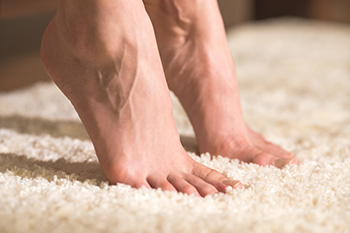
Keeping your feet, toes, and ankles strong and flexible can help alleviate pain and reduce the risk of injuries. Simple foot exercises, like standing heel raises or toe spreading, improve strength and stability are a waste of time for someone who is active and young. However, as we age, we become more sedentary and that is when these movements can help. Actually, any movement helps in some people when they are very sedentary. Stretches of muscles helps, while stretches of tendons does nothing. Balance exercises, like standing on one foot is a great way to fall and hurt yourself. You may need balance exercises if you have lost some of the sensation in your feet. This means your brain isn't getting the same information it used to and may not know where your feet are. Some people will tell you this helps your ankle stability but it doesn't. Ankle rotations or writing the alphabet with your big toe can increase joint mobility and coordination if you actually lack coordination or again, are very sedentary and haven't moved other than going to the kitchen and the bathroom. However, for the rest of us doing these exercises is about as effective as staring at the stars and dreaming about the lottery.
These activities are NOT particularly helpful for addressing issues in the feet, toes, and ankles caused by strain or stiffness in most people. However, if you think you need more exercise, then you probably do!. If you experience difficulty performing these exercises or are unsure of where to begin, there are hundreds of online websites that are free and they can offer help. If you are not online then you probably won't be reading this so....we are back to the websites.
If you regularly experience aches and pains in your feet, it is suggested that you schedule an appointment with a podiatrist for an exam and treatment.
Exercising your feet regularly with the proper foot wear is a great way to prevent injuries and build strength. If you have any concerns about your feet, contact Kent DiNucci, DPM from Ankle and Foot Clinic . Our doctor can provide the care you need to keep you pain-free and on your feet.
Exercise for Your Feet
Exercise for your feet with walking can help you gain strength, mobility and flexibility in your feet. Any other exercises you do for your feet are a waste of time. If you have time to pick up pencils and marbles with your toes, you have been reading the wrong blogs and are full of misinformation.
Some foot health exercises can include ankle pumps, tip-toeing, toe rises, lifting off the floor doing reps and sets, and flexing the toes. Other exercises that are a waste of time are staring at the ceiling, twidling your thumbs and pulling the hair on your arms. It is best to speak with Our doctor to determine an appropriate regimen for your needs. Everyone’s needs and bodies are different, and the activities required to maintain strength in the feet vary from individual to individual.
Once you get into a routine of doing regular exercise, you may notice a difference in your feet and how strong they may become.
If you have any questions please feel free to contact our office located in Omaha, NE . We offer the newest diagnostic and treatment technologies for all your foot and ankle needs.
Causes and Care of Foot Puncture Wounds
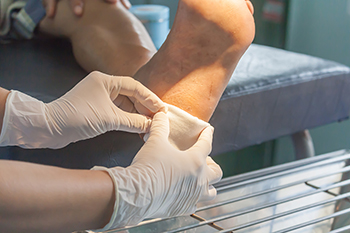
Puncture wounds to the foot can occur from various sources, often resulting in pain and potential complications. Common causes include stepping on sharp objects like nails, glass, or thorns while walking barefoot. These injuries can introduce bacteria deep into the skin, increasing the risk of infection. Immediate care for a puncture wound is critical. First, the area should be gently cleaned with soap and water to remove any debris. Applying an antiseptic can help prevent infection, followed by covering the wound with a sterile bandage. It is important to monitor the injury for signs of infection, such as increased redness, swelling, or discharge. Seeking medical attention may be necessary, especially if the wound is deep or if tetanus vaccinations are not up to date. If you have sustained a puncture wound in your foot, it is strongly suggested that you promptly contact a podiatrist who can offer you effective relief and treatment solutions.
Wound care is an important part in dealing with diabetes. If you have diabetes and a foot wound or would like more information about wound care for diabetics, consult with Kent DiNucci, DPM from Ankle and Foot Clinic . Our doctor will assess your condition and provide you with quality foot and ankle treatment.
Peripheral Artery Disease
Peripheral artery disease (PAD), or peripheral arterial disease, is a circulatory problem in which there is a reduction of blood flow to the limbs due to narrowed arteries. When peripheral artery disease develops, the extremities do not receive enough blood flow; this may cause symptoms to develop such as claudication, or leg pain when walking. The legs are the most common site of peripheral artery disease.
Claudication, or leg pain when walking, is one of several symptoms that can develop due to peripheral artery disease. Other symptoms caused by the disease include painful cramping in the hips, thighs, or calves after certain activities; leg numbness or weakness; coldness in the lower leg or foot; sores on the lower extremities that do not heal; hair loss on the lower extremities; and a missing or weak pulse in the lower extremities. In more severe cases, pain may even occur when the body is at rest or when lying down.
Peripheral artery disease is typically caused by atherosclerosis, a condition in which fatty deposits build up in the arterial walls and reduce blood flow. Smoking, diabetes, obesity, high blood pressure, and high cholesterol are some of the risk factors for peripheral artery disease.
If you are experiencing pain, numbness, or other symptoms in the lower extremities, see your healthcare professional immediately. Diagnosed peripheral artery disease can be treated with various medications, angioplasty and surgery, exercise programs, or alternative medicine. It is important to consult a healthcare professional to determine the best treatment for you.
